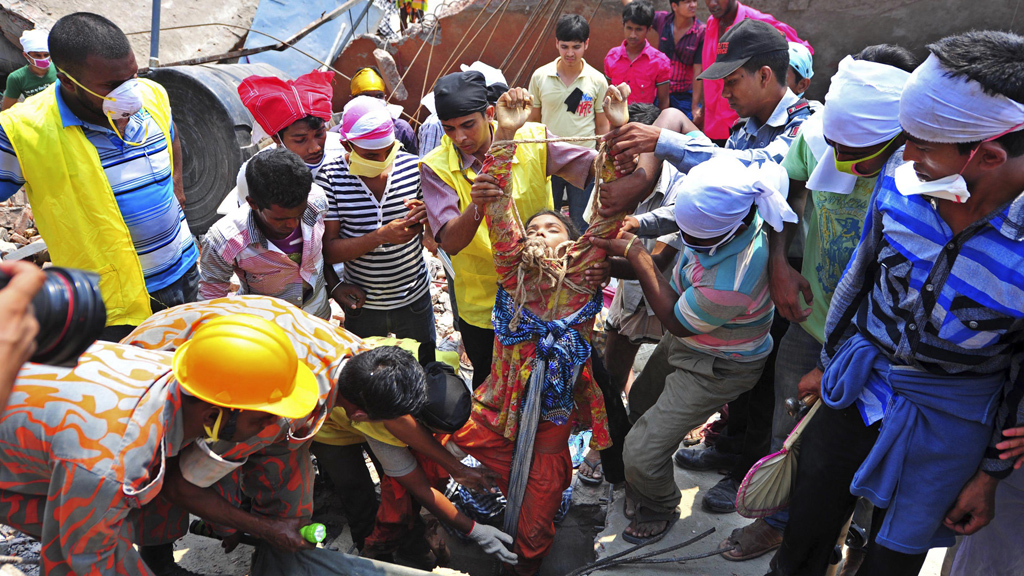Dhaka building collapse: more than 300 dead
As rescuers comb the wreckage of a factory building where hundreds of people have died, the Bangladeshi foreign minister tells Channel 4 News that higher clothes prices could improve workers’ lives.
Speaking in London, where she is attending a Commonwealth meeting, Dr Dipu Moni emphasised the importance of the garment industry to Bangladesh and hinted that higher prices could have an impact in improving working conditions.
She told Channel 4 News “We do need people to come and invest, and also buy our clothes – but maybe consumers, if the prices are just a little bit more so that it doesn’t hurt them, but it becomes a better kind of incentive for our workers.”
Over night rescue crews managed to pull 62 people from the wreckage of the eight-storey building, which collapsed on Wednesday.
However, more than 300 have been reported dead in the disaster, Brigadier General Mohammed Siddiqul Alam Shikder, who is overseeing rescue operations, said. More than 2,000 people have been rescued.
We know a human being can survive for up to 72 hours in this situation. So our efforts will continue non-stop. Major General Chowdhury Hasan Suhrawardy
Forty people rescued over night were trapped on the fourth floor of the building.

A military official, Major General Chowdhury Hasan Suhrawardy, said the search and rescue operations would continue until at least Saturday.
“We know a human being can survive for up to 72 hours in this situation. So our efforts will continue non-stop.” he said.
‘The roof collapsed’
Rescue workers had to cut off Mussamat Anna’s mangled right hand to pull the 18-year-old garment worker free from the debris on Thursday night.
“First a machine fell over my hand and I was crushed under the debris. … Then the roof collapsed over me,” she said from a hospital bed on Friday.
Thousands of bystanders have gathered at the site of the accident, the Rana Plaza building. Rescuers were applauded as people were freed overnight. However, the lingering stench of rotting bodies is a permanent reminder that many have not been so lucky.
Protests
Angry relatives and workers from across the regions have taken to the streets to protest against the working conditions that preceded the disaster (see video, above).
Police say cracks in the building had led them to order an evacuation of the building the day before it fell, but the factories inside, including one that supplies to Primark, ignored the order.
Relatives of those still missing were reported to have clashed with police, who used batons to disperse the mobs. Fifty people were reported to have been injured in the clashes.
Elsewhere, many thousands of workers from the hundreds of garment factories across the Savar industrial zone and other nearby industrial areas took to the streets. Local news reports said protesters had smashed dozens of vehicles at one strike on Friday. Most of the other protests were peaceful.
Habibur Rahman, police superintendent of the Dhaka district, identified the owner of the collapsed building as Mohammed Sohel Rana, a local leader of ruling Awami League’s youth front. Rahman said police were also looking for the owners of the garment factories.
Among the garment makers in the building were Phantom Apparels, Phantom Tac, Ether Tex, New Wave Style and New Wave Bottoms. Altogether, they produced several million shirts, pants and other garments a year.




